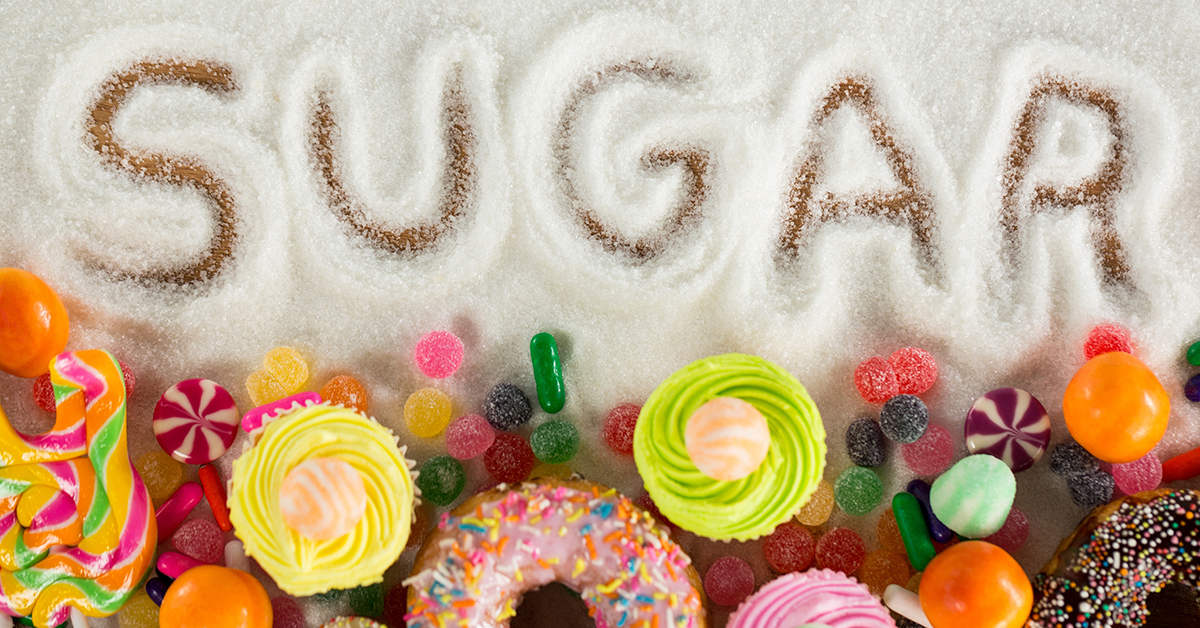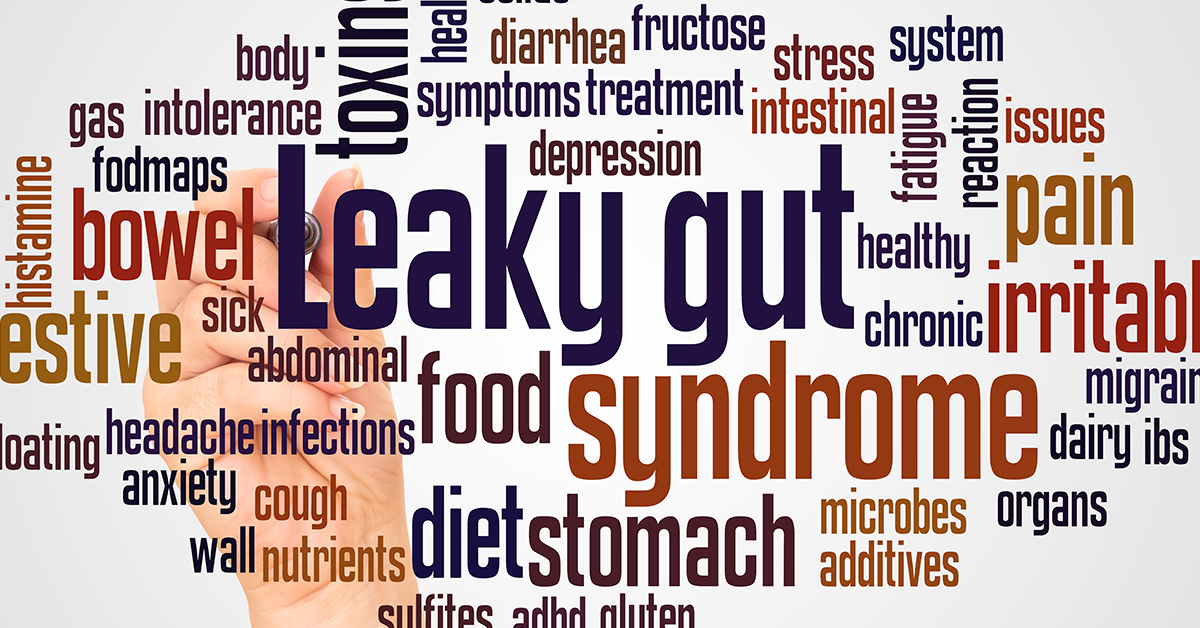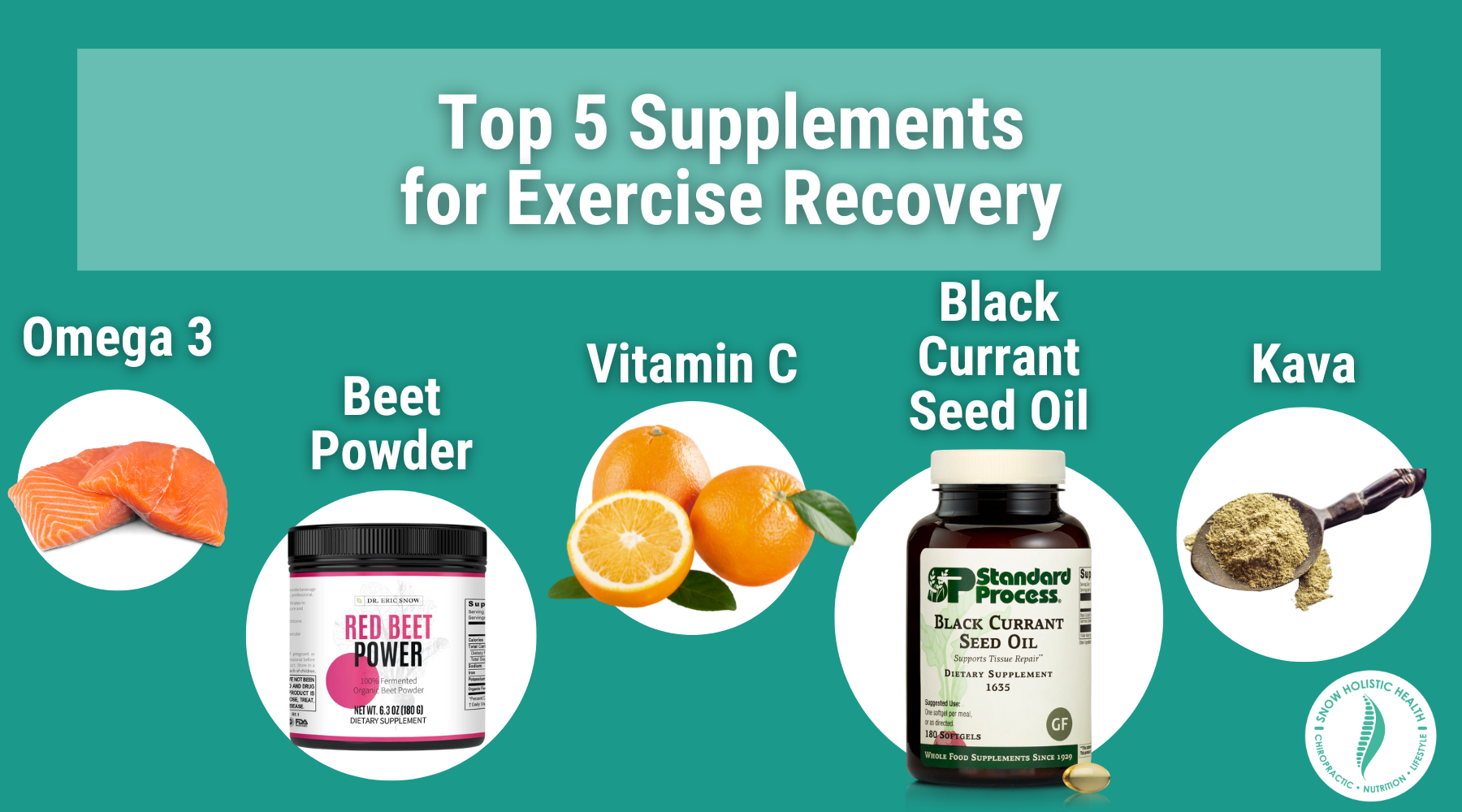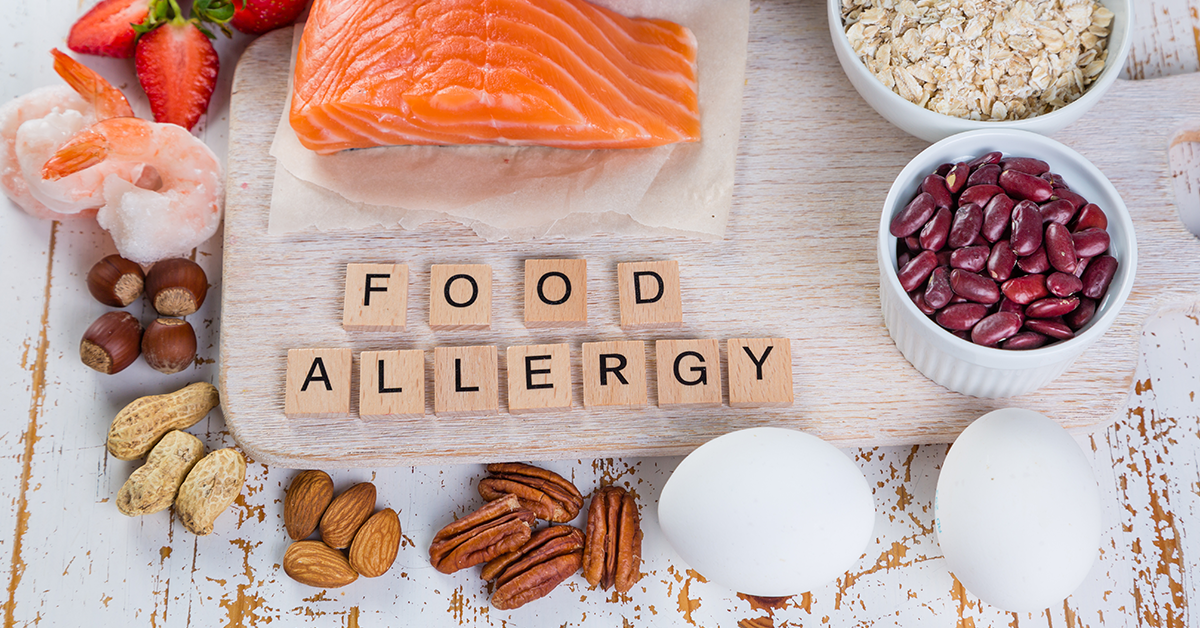Why does a high-sugar diet contribute to dysbiosis?

Many people think “improving your gut microbiome” involves taking probiotics. But what you eat has a much more significant impact on your gut bacteria than any probiotics could have. A 2014 clinical trial published in Nature showed that our microbiome changed entirely within 24 hours of changing their diet 1.
The modern Standard American Diet leads to obesity, diabetes, and many other health conditions partly because it ruins your gut microbiome 2. Food processing strips your food of components that feed good bacteria while retaining a lot of components that trigger a burst of sugar in your system.
Obviously, soda and candies contain sugar—you may already know that they can cause stomach upset and sugar crashes. But your body and gut bacteria respond to breakfast cereals, bread, beer, pasta as if you’ve just eaten sugar. Also, sugar ingredients, like maltodextrin and high-fructose corn syrup, lurk in your sauces, salsa, soups, stir-fries, fruit juices, yogurt, and even salad dressing. If you have been buying these items from the store, you may not realize how sweet they are because your palate is used to everything being extra sweet. In this article, we will cover how the sugar and sugar ingredients affect your gut bacteria.
What does it mean to have a healthy gut microbiome?
Each of us is more bacteria than humans, comprising 10 times the number of bacterial cells to human cells. These bacteria affect all aspects of your health, from digestive function to weight and mental health.
Healthy people have a high diversity of gut bacteria and a lot of friendly strains, in a combination that is unique to each individual. The diversity makes it robust and recovers quickly from insults such as antibiotic use, toxic exposure, and infections 3. Some of the friendly strains include Bifidobacteria and Lactobacilli, which is why they are common components of probiotic supplements.
These friendly bacteria do a lot of work behind the scenes to keep you healthy. They inhibit the growth of bad bacteria and yeasts 4. Most importantly, a healthy microbiome makes you lean, strong, and resilient, keeping you healthy through changing environments, diets, foods, and stressors.
4 ways sugar ruins your gut bacteria
A healthy gut microbiome is earned, not given. So, to achieve a healthy one, you have to feed the good ones and starve the bad ones.
1) Reduces gut bacteria diversity
Refined sugar and flour are not natural foods, either for you or your gut bacteria. Before our food became industrialized, sugar and carbohydrates always came with a lot of fibers, antioxidants, and many other micronutrients. The fiber, antioxidants, and micronutrients can act like antidotes to the poison that is sugar. They can slow down your sugar absorption and protect your gut bacteria from the sugar itself 5,6.
If you consume the poison without the antidotes, such as by eating the refined carbs, you will feed the bad bacteria, while starving the good ones. This will reduce the overall diversity of your gut microbiome.
Mice fed with a high-glucose or fructose diet lost a lot of gut bacteria diversity. They also develop increased leaky gut, causing inflammation and high cholesterol 7,8.
In a large microbiome study involving 1135 Dutch people, those who ate high sugar diets, followed by beer, bread, and soda had the lowest gut bacteria diversity 9.
Therefore, it is important to cut back on refined carbohydrates and sugar to keep your gut microbiome diverse.
2) Promotes yeast and bad bacteria growth
Aside from the friendly bacteria, everyone has some bad bacteria and yeast in their gut. The good and bad ones coexist because your friendly bacteria keep the bad ones in check.
If you’ve ever baked bread or brewed beer, you will see that the yeast eats sugar for energy. The sugar allows the yeast cells to grow and multiply. The yeast cells in your gut also feed on sugar.
One of the worst yeasts that can overgrow is Candida albicans. Candida is opportunistic, meaning that it takes the opportunity to grow when your body and other microbes in your gut allows. Candida often overgrows after a course of antibiotics or in immunocompromised patients 10.
Typically, good bacteria ferment fiber, releasing short-chain fatty acids, which helps maintain a healthy gut barrier and microbiome. The short-chain fatty acids inhibit candida growth. However, in the presence of sugar, the candida becomes resistant to the short-chain fatty acids 11, allowing it to overgrow.
When candida overgrows, it promotes more dysbiosis, increasing bad bacteria. The dysbiosis allows candida to take up more space and eliminates the good bacteria that make short-chain fatty acids 12.
3) Preventing good bacteria from making your gut a home
At birth, we get our gut bacteria from our mother. As an adult, we get our bacteria from our environment, food, and probiotic supplements. These bacteria may or may not stay (“colonize”), depending on whether your gut is hospitable.
Fructose is a sweeter sugar, which is half of the table sugar (sucrose) and the majority of high-fructose corn syrup (HFCS). HFCS is commonplace in processed foods and sugar-sweetened beverages.
Your body treats fructose like a poison. At low doses, the gut cells can convert it into glucose and absorb the glucose into the bloodstream. However, in high doses such as a can of soda, some fructose goes to the liver, the only organ that can burn fructose for energy. The remaining fructose stays in the gut and reaches the gut bacteria in the large intestine 13.
A mouse study shows that when a good gut bacteria strain is exposed to fructose, it inhibits the bacteria from colonizing 14. This bacteria strain Bacteroides thetaiotaomicron is associated with leanness and weight loss in humans 15. This might explain why fructose consumption is associated with obesity.
4) Weakening the gut barrier
Bad bacteria can cause inflammation and lead to diseases. The reverse is also true. Inflammation begets an inflammatory microbiome16, which also feeds into a vicious cycle.
Sugar makes this vicious cycle even worse by opening up the gut barrier, allowing bacteria toxins to enter the bloodstream 17. These bacterial toxins are called lipopolysaccharides, and dubbed LPS or “little pieces of shit” because they are also found in feces. LPS in the bloodstream can cause all kinds of modern conditions—obesity, fatty liver, diabetes, depression, brain fog, fatigue, and overall inflammation 18.
How to fix sugar-induced dysbiosis
Sugar is unhealthy, not only for you but also for your gut microbiome. Fortunately, your microbiome can change almost overnight when you fix your diet and lifestyle. However, giving up sugar might be more challenging than it seems because sugar is abundant in nearly everything these days. The following tips can help you successfully give up sugar and improve your gut microbiome:
1) Read labels and become aware of all sugar ingredients
Sugar-containing foods almost always never have the word “sugar” in their ingredient lists. To successfully avoid sugar, you need to know how to find them. The following ingredients are the sugar in disguise:
- Agave nectar
- Applesauce
- Brown rice syrup
- Cane sugar
- Coconut palm sugar Coconut sugar
- Concentrated fruit juice
- Corn sugar
- Corn syrup solids
- Dates
- Date syrup
- Dextrose
- Evaporated cane juice
- Fructose
- Fruit purees
- Fruit sugar
- Glucose
- Glucose syrup
- Granulated sugar
- High-fructose corn syrup
- Honey, raw honey
- Invert sugar
- Maple syrup
- Molasses
- Palm sugar
- Sucrose
- Sugar
- Sweet potato syrup
- Tapioca syrup
- Yacon, Yacon syrup
You’d also need to learn to read Nutrition Facts labels. Under “Carbohydrates,” it will list how many grams of sugar the food item contains in a serving.
2) Try a sugar detox
Sugar can be addictive 19. It increases your reward and pain-relieving neurotransmitters, dopamine and opiates 20. When giving up sugar, it is normal to experience some withdrawal symptoms. You may have cravings or become moody initially. Some people even get headaches and tired from sugar withdrawal. Some of these symptoms can be addressed with the right supplement programs to support your body.
Also, many Americans are so used to eating everything sweetened that they don’t taste the natural sweetness in foods. Initially, you may feel like all food tastes bad because your taste buds are under-stimulated.
Our 30-day sugar detox program helps you navigate the processes and challenges involved with giving up sugar. We provide you with all the tools, tips, recipes, and supplement guides so that you can successfully give up sugar and improve your health long-term.
3) Eat a lot of fiber and antioxidants
Fiber and antioxidants, especially polyphenols, are antidotes to sugar 21,22. They feed the good bacteria and allow the good bacteria to produce substances that inhibit the bad bacteria and yeast. Adding fiber and antioxidants can repair the damage from sugar and stop the vicious cycle.
Ideally, at least 25 - 50 grams of fiber daily is ideal. But many people struggle to get enough of those because one cup of vegetables have around 2 - 4 grams of fiber. Fiber and synbiotic (fiber + probiotic) supplements can work as a good nutritional insurance to help you achieve this goal. We recommend Green Power as a fermented greens synbiotic supplement.
Polyphenols are substances that give color to your fruits, vegetables, coffee, and green tea. We still don’t know if there is an optimal upper limit of how much polyphenol you can take. However, a recent study showed that over 650 mg of polyphenol a day correlates with longevity in older adults. That’s approximately 4 - 5 lbs of fruits and vegetables 23. The amount of polyphenol in our food varies widely. One way to ensure that you get enough is to use supplements that contain many plant-based antioxidants. We recommend Green Power, Green Tea Power, and Red Beet Power. The fermentation in these supplements also increases polyphenols and unlock many nutrients.
4) Use probiotics and a gut barrier support program
If you smash a wall with a hammer, simply removing the hammer will not completely restore the original functional wall. Likewise, for your gut, simply giving up sugar alone will not undo years of damage from the sugar. But don’t be discouraged—you can support your gut and microbiome to speed up the repair process.
One way to support your microbiome is to re-introduce the good bacteria with a high-quality probiotic supplement along with fibers and polyphenols. You can also use natural antimicrobials to kill off the bad bacteria and yeast in order to make space for the good ones.
To support your gut barrier to repair itself, you need to remove gut irritants and inflammatory foods. These may include the common food allergens such as gluten and dairy. Then, feed your gut cells with its preferred fuel like glutamine to accelerate the healing process.
In our Eat & Be Well 30-day program, we support you through this process to identify inflammatory foods that are unique to you. Also, you will use lifestyle changes and supplements to support your gut to heal. 1
References:
- David, L. A. et al. Diet rapidly and reproducibly alters the human gut microbiome. Nature 505, 559–563 (2014).
- Zinöcker, M. K. & Lindseth, I. A. The Western Diet-Microbiome-Host Interaction and Its Role in Metabolic Disease. Nutrients 10, (2018).
- Rinninella, E. et al. What is the Healthy Gut Microbiota Composition? A Changing Ecosystem across Age, Environment, Diet, and Diseases. Microorganisms 7, (2019).
- Nguyen, L. N., Lopes, L. C. L., Cordero, R. J. B. & Nosanchuk, J. D. Sodium butyrate inhibits pathogenic yeast growth and enhances the functions of macrophages. J. Antimicrob. Chemother. 66, 2573–2580 (2011).
- Kumar Singh, A. et al. Beneficial Effects of Dietary Polyphenols on Gut Microbiota and Strategies to Improve Delivery Efficiency. Nutrients 11, (2019).
- Chambers, E. S., Preston, T., Frost, G. & Morrison, D. J. Role of Gut Microbiota-Generated Short-Chain Fatty Acids in Metabolic and Cardiovascular Health. Curr. Nutr. Rep. 7, 198–206 (2018).
- Do, M. H., Lee, E., Oh, M.-J., Kim, Y. & Park, H.-Y. High-Glucose or -Fructose Diet Cause Changes of the Gut Microbiota and Metabolic Disorders in Mice without Body Weight Change. Nutrients 10, (2018).
- Sen, T. et al. Diet-driven microbiota dysbiosis is associated with vagal remodeling and obesity. Physiol. Behav. 173, 305–317 (2017).
- Zhernakova, A. et al. Population-based metagenomics analysis reveals markers for gut microbiome composition and diversity. Science 352, 565–569 (2016).
- Seelig, M. S. Mechanisms by which antibiotics increase the incidence and severity of candidiasis and alter the immunological defenses. Bacteriol. Rev. 30, 442–459 (1966).
- Cottier, F., Tan, A. S. M., Xu, X., Wang, Y. & Pavelka, N. MIG1 Regulates Resistance of Candida albicans against the Fungistatic Effect of Weak Organic Acids. Eukaryot. Cell 14, 1054–1061 (2015).
- Bertolini, M. et al. Candida albicans induces mucosal bacterial dysbiosis that promotes invasive infection. PLoS Pathog. 15, e1007717 (2019).
- Jang, C. et al. The Small Intestine Converts Dietary Fructose into Glucose and Organic Acids. Cell Metab. 27, 351–361.e3 (2018).
- Townsend, G. E., 2nd et al. Dietary sugar silences a colonization factor in a mammalian gut symbiont. Proc. Natl. Acad. Sci. U. S. A. 116, 233–238 (2019).
- Greenhill, C. Obesity: Gut microbiome and serum metabolome changes. Nature reviews. Endocrinology vol. 13 501 (2017).
- Zeng, M. Y., Inohara, N. & Nuñez, G. Mechanisms of inflammation-driven bacterial dysbiosis in the gut. Mucosal Immunol. 10, 18–26 (2017).
- Lambertz, J., Weiskirchen, S., Landert, S. & Weiskirchen, R. Fructose: A Dietary Sugar in Crosstalk with Microbiota Contributing to the Development and Progression of Non-Alcoholic Liver Disease. Front. Immunol. 8, 1159 (2017).
- André, P., Laugerette, F. & Féart, C. Metabolic Endotoxemia: A Potential Underlying Mechanism of the Relationship between Dietary Fat Intake and Risk for Cognitive Impairments in Humans? Nutrients 11, (2019).
- DiNicolantonio, J. J., O’Keefe, J. H. & Wilson, W. L. Sugar addiction: is it real? A narrative review. Br. J. Sports Med. 52, 910–913 (2018).
- Avena, N. M., Rada, P. & Hoebel, B. G. Evidence for sugar addiction: behavioral and neurochemical effects of intermittent, excessive sugar intake. Neurosci. Biobehav. Rev. 32, 20–39 (2008).
- Hills, R. D., Jr et al. Gut Microbiome: Profound Implications for Diet and Disease. Nutrients 11, (2019).
- Anhê, F. F. et al. A polyphenol-rich cranberry extract protects from diet-induced obesity, insulin resistance and intestinal inflammation in association with increased Akkermansia spp. population in the gut microbiota of mice. Gut 64, 872–883 (2015).
- Manach, C., Scalbert, A., Morand, C., Rémésy, C. & Jiménez, L. Polyphenols: food sources and bioavailability. Am. J. Clin. Nutr. 79, 727–747 (2004).



